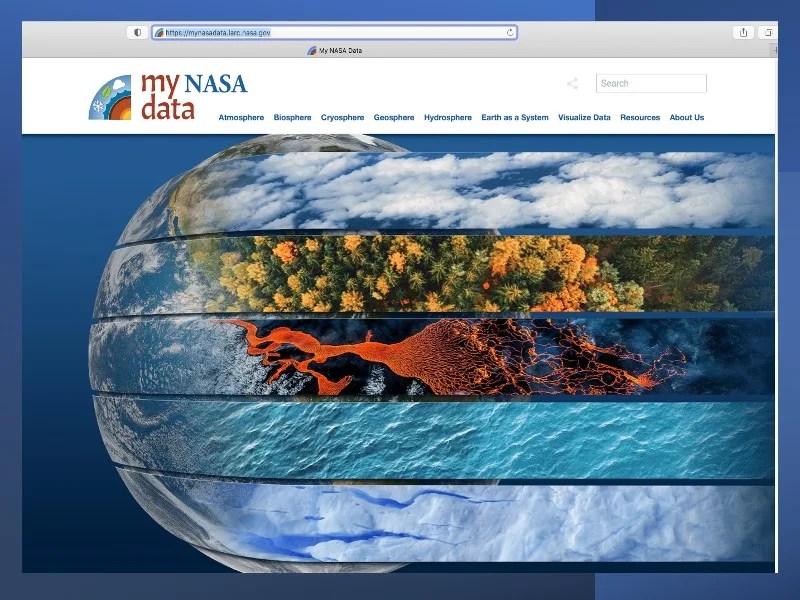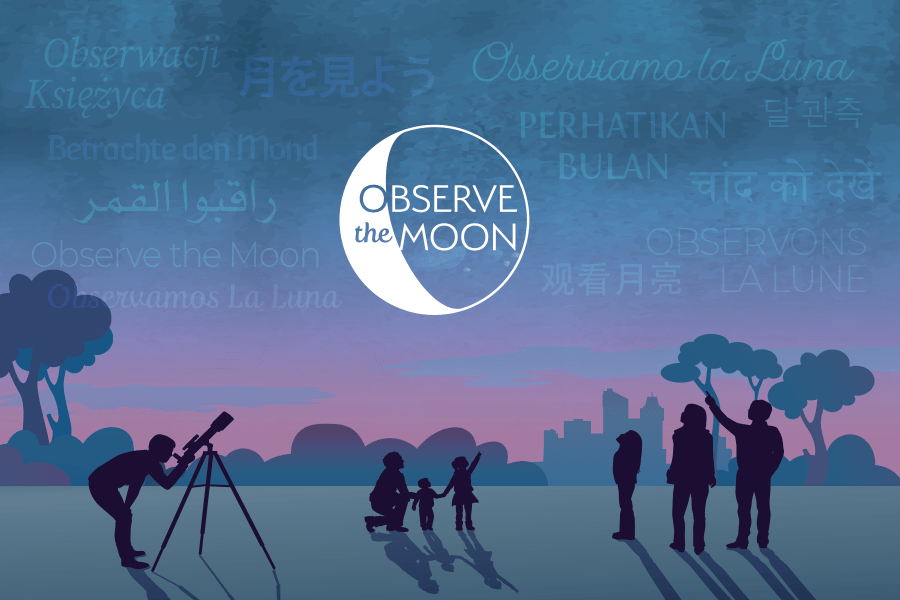Find a Resource
Below are suggested outreach activities and resources that the Lunar Reconnaissance Orbiter (LRO) team recommends for sharing lunar science and exploration with fans.
Feel free to adjust the suggested activities in whatever way makes sense for your team or browse some of the included NASA resources to find other materials to support your event(s).
Note: For specialty jerseys and advertising, it is important that you understand the rules of using the NASA logo. Please see NASA's Regulations for Merchandising Requests for additional information.
Activities
Concourse/Field Activities
Build Your Own Lunar Lander
In this challenge, people will use what they know about gravity, motion, and forces to design and build a shock-absorbing system that will protect two “astronauts” when they land. Fans could be invited to compete in a contest at the ballpark, with points given for hitting the target and landing upright. *Note: This activity is also available in Spanish.*
Kid Moon: Splat!
Set up a large open area in the concourse for fans to learn about the circles (the impact craters!) they can see on the Moon, using water balloons.
Making Impact Craters
Create your own impact craters using a few simple materials. When astronauts visit the Moon during future Artemis missions, they will be able to study craters that may contain water and ice. Analyzing these craters may help NASA determine how to best use water and other resources while on the lunar surface.
Cookie Moon Phases
Discover how the Moon's appearance changes over the course of a month using sandwich cookies.
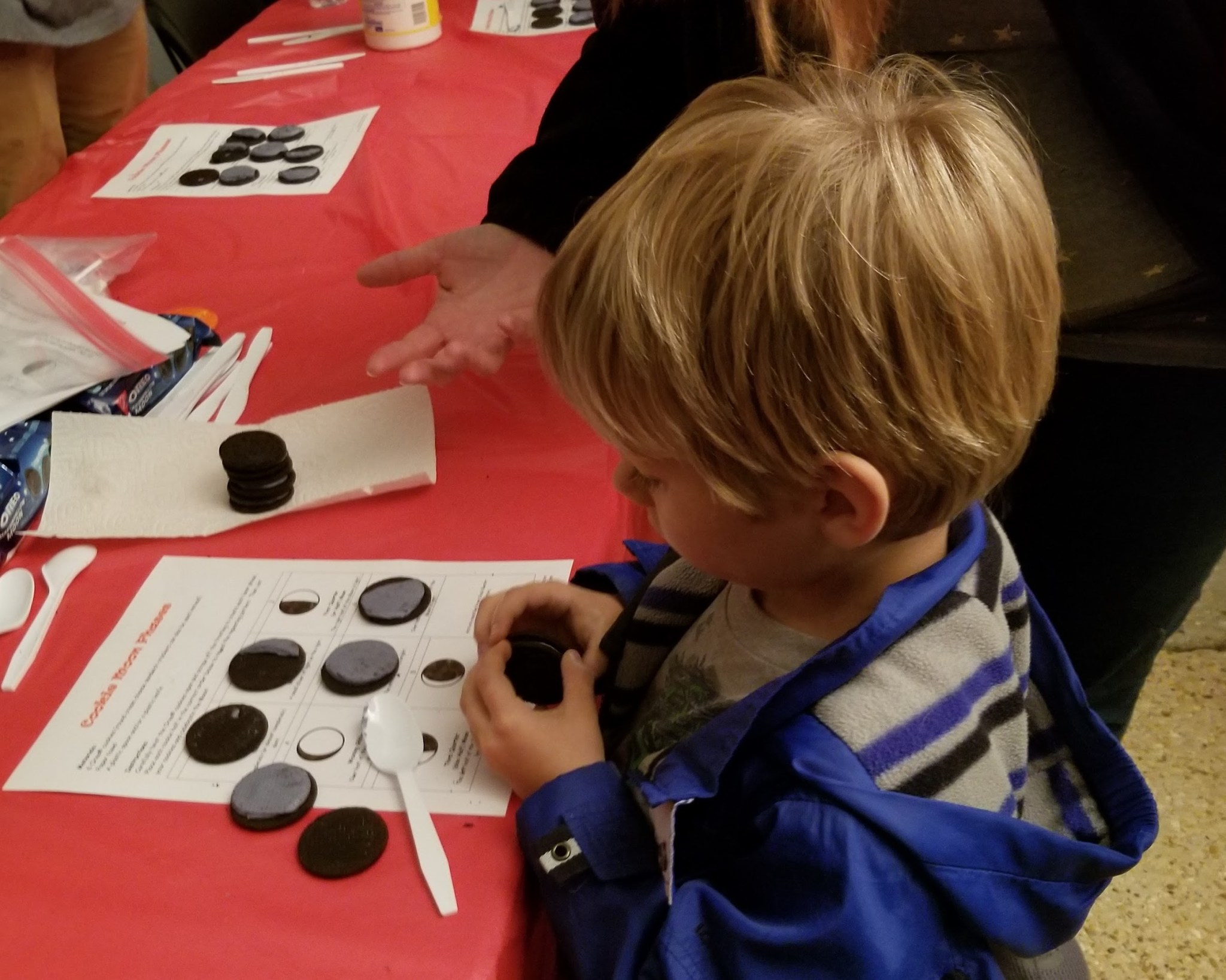
Make a Moon Phases Calendar and Calculator
Have you ever wondered when the next full moon will be? How about the first quarter moon? Now you can have all the dates and times for all lunar phases for the year at your fingertips by building your own Moon phases calendar and calculator! *Note: This activity has a low-ink printout option.*
Modeling the Earth-Moon System
This activity encourages people to confront their misconceptions about the size and distance of the Moon. Using balloons and string, have your fans create an Earth-Moon model to learn how the small Moon can cover the enormous Sun during a total solar eclipse.
Moon Leap
Discover out how high you could jump on the Moon. As an activity extension, you can also add other planets to the mix and could present this as a challenge or competition for your fans.
Solar System in My Ballpark
In this activity, your fans will create a scale model of the solar system. Rather than using a local neighborhood as described in the write-up, you can use your team's ballpark instead.
During the Game Activities
Fun Science Talk
Invite a local scientist or scientists to share their expertise and enthusiasm with your fans. Some scientists could bring their own activities or props to share as well. If you need help finding local experts to attend your event, check out the Find A Partner section of this page.
Moon Trivia
Between innings, you could show Moon trivia on the jumbotron and have fans vote for what they think the correct answer is. For lunar-related trivia ideas, check out NASA's Moon website.
Post-Game Activities
Landing Humans on the Moon Educator Guide
Your ballpark could have copies of this educator guide, featuring NASA's Artemis missions to the Moon, available for parents and teachers to continue the discussion with their students after the game.
Water Bottle Rockets
Utilize part of the field as a launching area for water bottle rockets. Customize your rockets by attaching your team's logo to the water bottle. Please make sure to provide safety glasses for participants. This activity pairs well with the video "To the Moon and Back: The Journey of Artemis I" (see the Gallery section). Note: You can also search for pre-made rocket kits online.
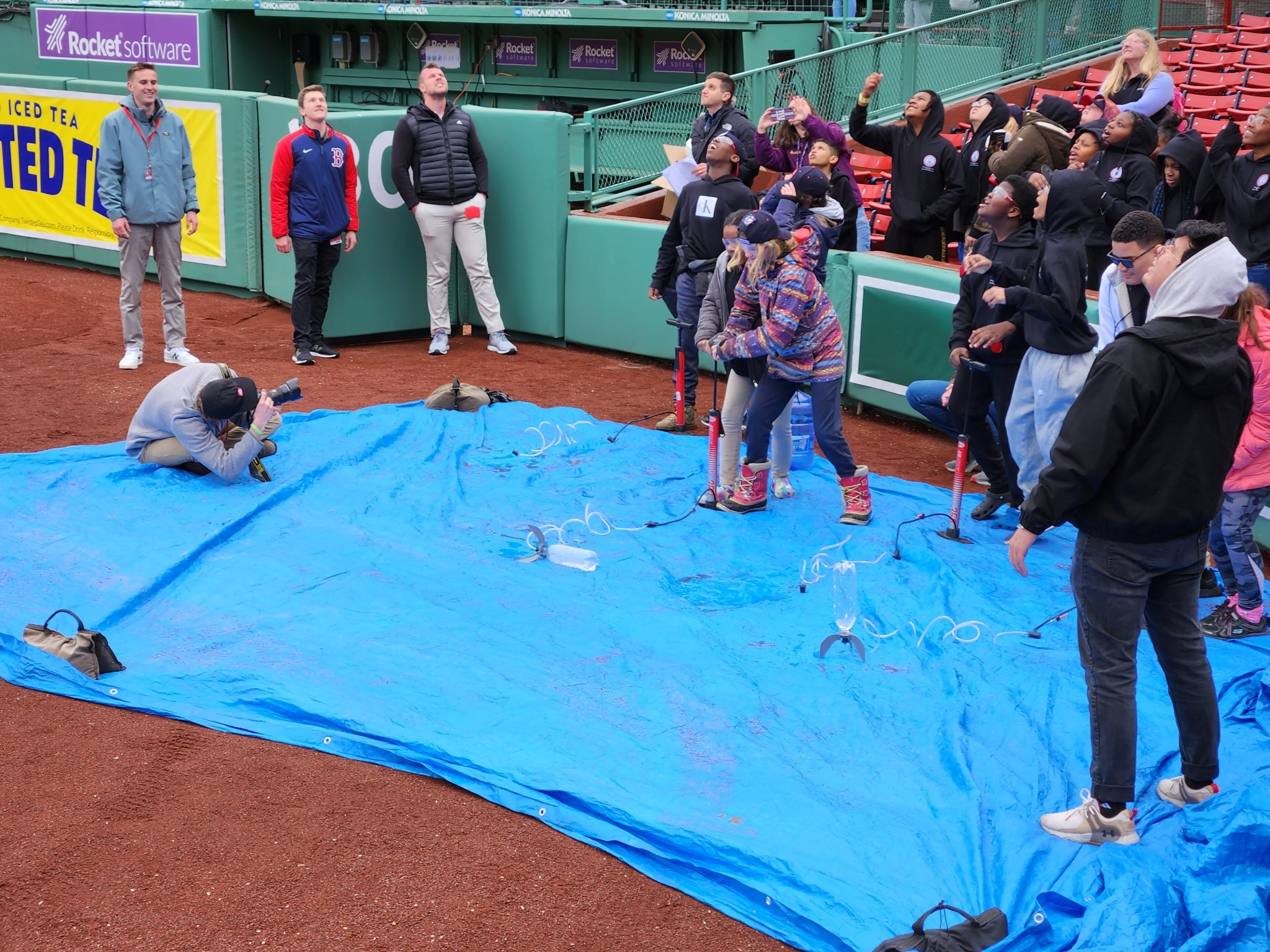
Telescope Viewing
You can team up with local astronomy clubs or departments to help facilitate telescope viewing after the game (see the Find A Partner section). Discover what the Moon's phase will be on the date of your event using NASA's Scientific Visualization Studio. Several lunar phases are particularly great to observe through a telescope – those that offer views of the "terminator," or the line between night and day on the Moon, without the Moon itself being too bright – the crescent and quarter moons.
Handouts
The following resources are available for download to use at your event.
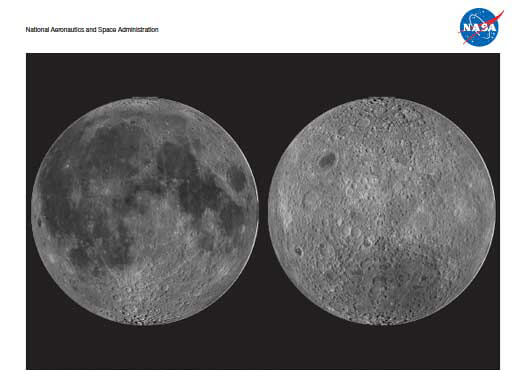
Seeing the Moon
Although scientists rely on a great variety of instruments to gather data about the Moon, detailed photographs remain one of the dominant sources of information.
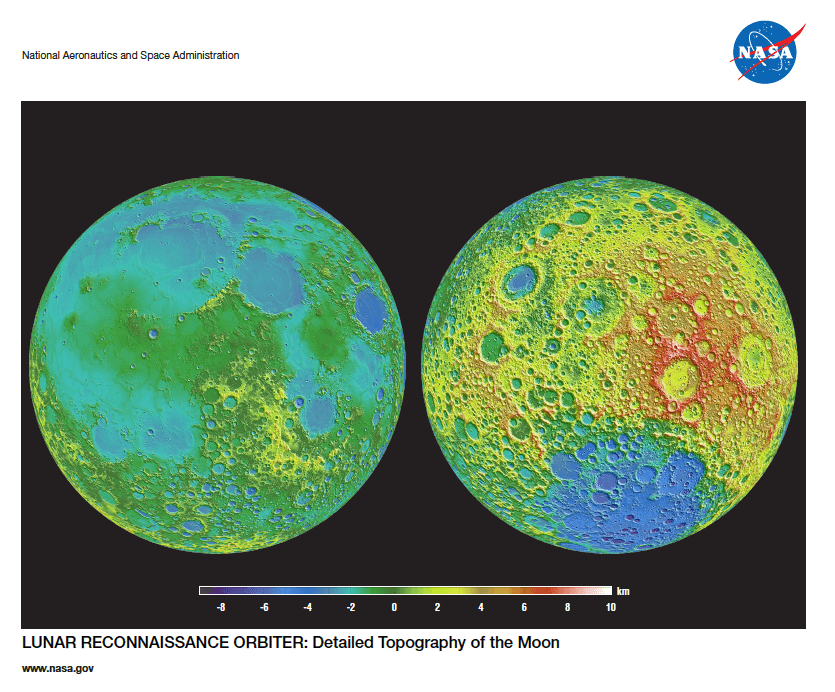
Detailed Topography of the Moon
The shape of a planetary surface tells scientists a lot about how that surface formed and changed over time.
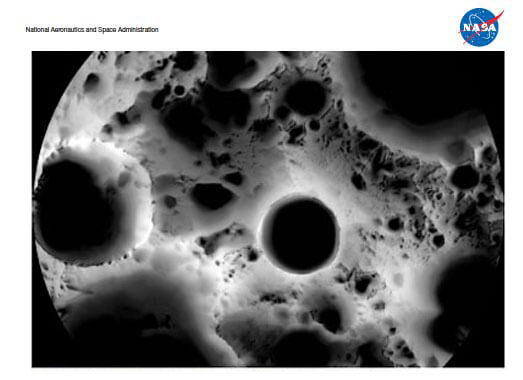
Permanently Shadowed Regions on the Moon
Scientists use data from several Lunar Reconnaissance Orbiter instruments to piece together the story of water on the Moon.
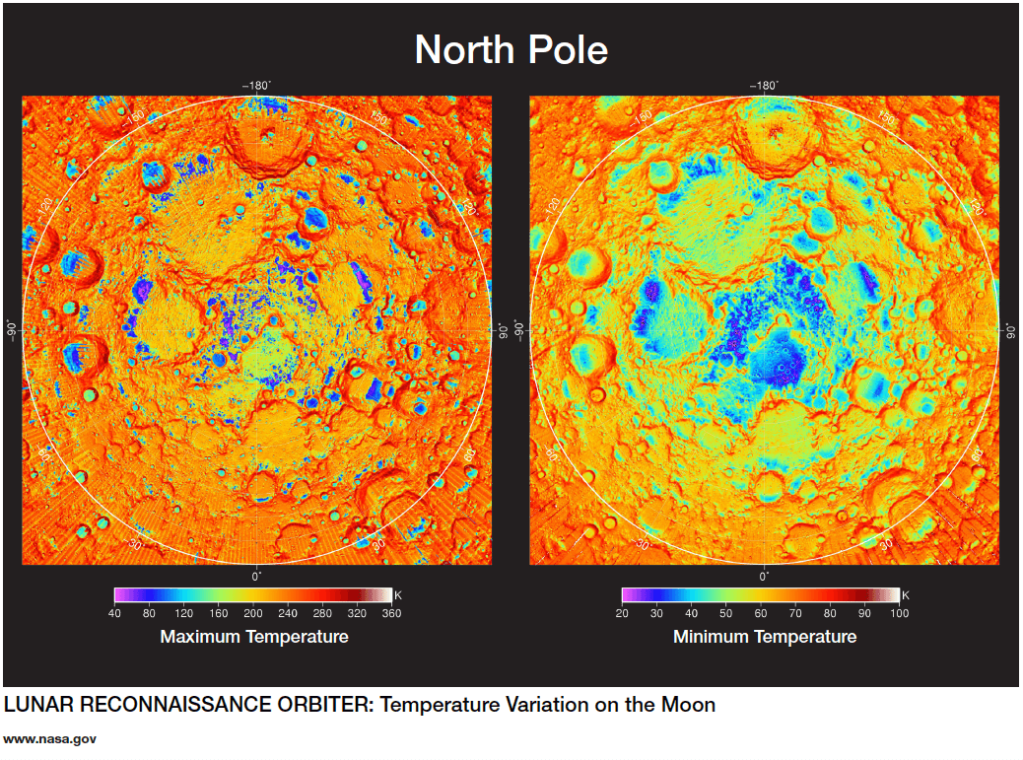
Temperature Variation on the Moon
The Diviner Lunar Radiometer instrument onboard NASA's Lunar Reconnaissance Orbiter has been mapping the temperature of the Moon since its launch in 2009.

Eclipse Observations
Learn about eclipse observations enabled by NASA’s Lunar Reconnaissance Orbiter.
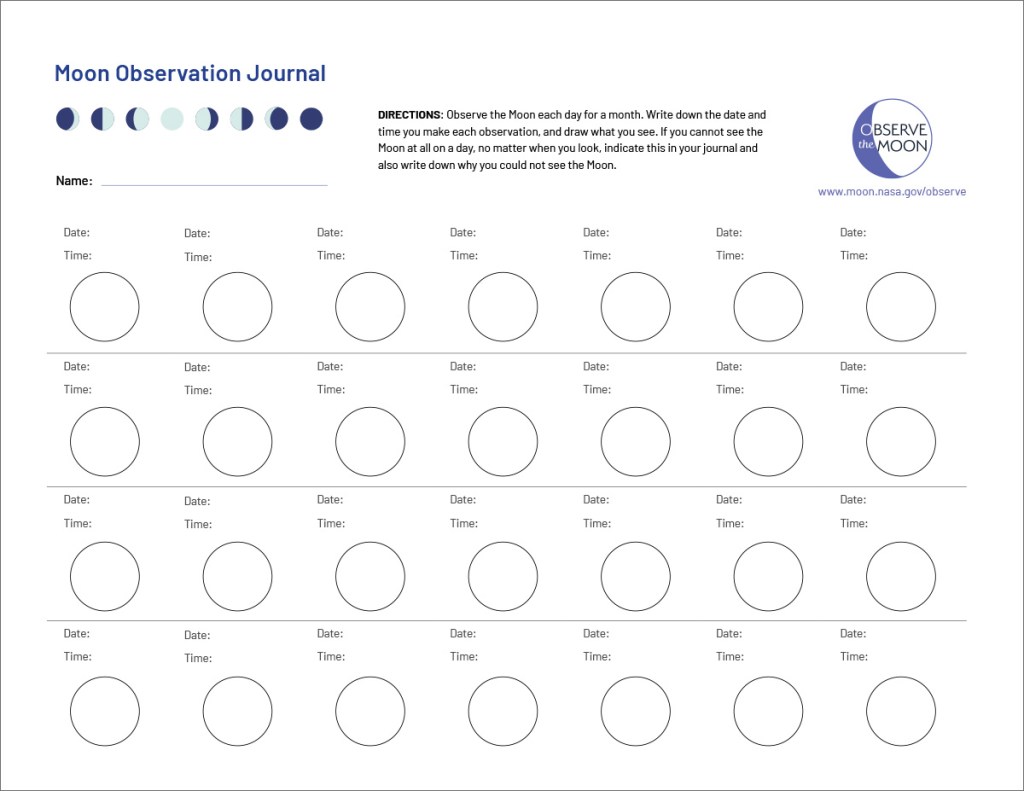
Moon Observation Journal
Set aside some time each day to look at the Moon. Record your observations in the log included here.
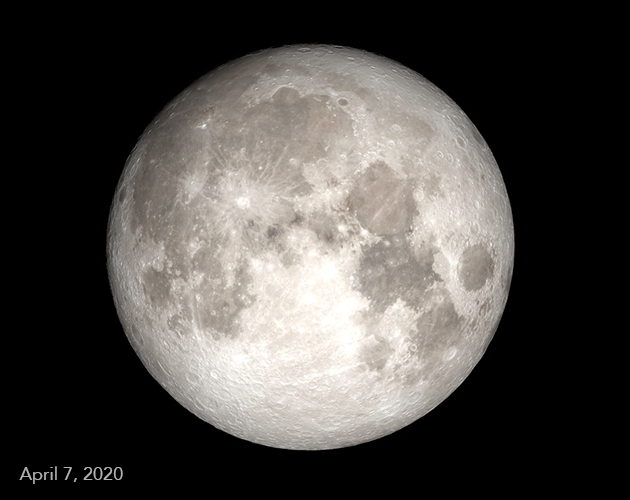
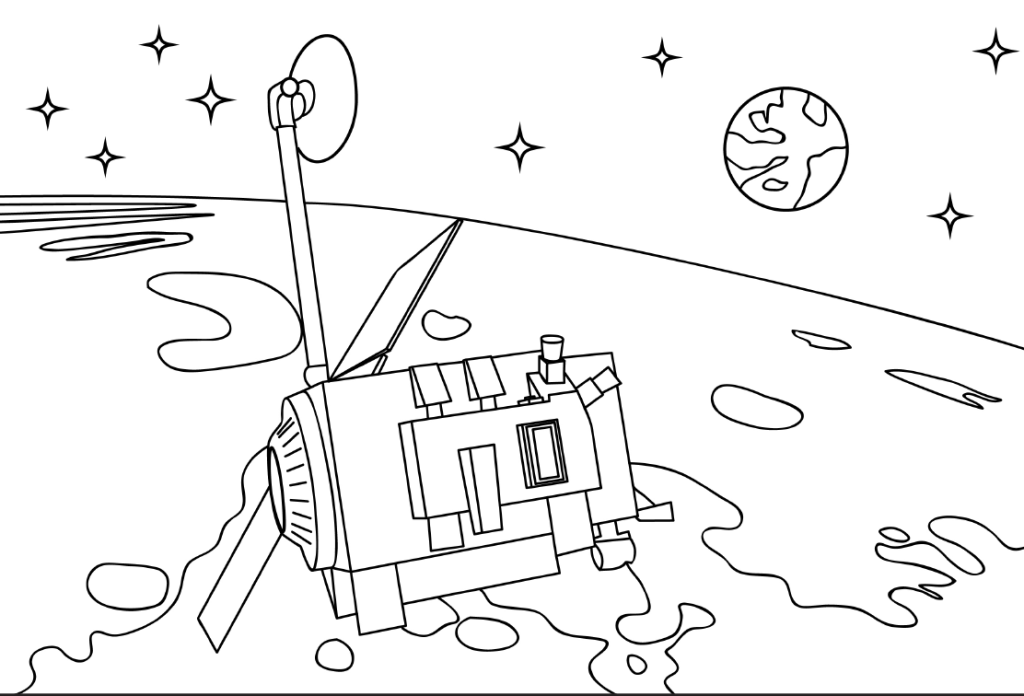
LRO Coloring Page
Color an outline of NASA’s Lunar Reconnaissance Orbiter spacecraft as it orbits the Moon.
Gallery
Videos & Animations
Artemis II: Mission Overview
Learn about the Artemis II mission to the Moon in this overview video.
Goddard in the Galaxy
NASA's Goddard Space Flight Center traverses the universe by having a hand in all aspects of space science. This music video showcases our exploration into the dark. *This is a great video to get your fans excited about space science.*
Lunar Reconnaissance Orbiter Visualizations
Browse visualizations and animations from NASA's Scientific Visualization Studio which highlight the Lunar Reconnaissance Orbiter and its discoveries.
Moonlight (Clair de Lune)
Set to Claude Debussy's "Clair de Lune," this visualization uses Lunar Reconnaissance Orbiter data to show the stark beauty of evolving light and shadow near sunrise and sunset on the rugged lunar surface. *This video would be great to show on a jumbotron.*
NASA+ Space Out: Moon Visuals
Space out to relaxing music and stunning ultra high-definition visuals of the Moon.
To the Moon and Back: The Journey of Artemis I
On November 16, 2022, NASA's Artemis I mission began a new era of spaceflight, testing systems that will take humans back to the Moon and beyond! It takes a powerful system of engines and boosters to get this massive rocket off the launchpad and to propel the Orion spacecraft all the way to the Moon. This video explains the parts of Artemis I and their functions during the mission. Watch a play-by-play of actual launch footage and Artemis I's journey to the Moon! *This video pairs well with the water bottle rocket activity.*
We Go – Artemis Generation
We Go: To the Moon and on to Mars. Our generation, the Artemis generation, will explore farther than we’ve ever gone before. If you are searching for a hype video to show on the jumbotron, this video is a great option.
Baseball Hits an Eclipse
Check out this video for an example NASA event at a minor league baseball game during the August 21, 2017, total solar eclipse.
The Moon's Role in a Solar Eclipse
This video explains how our Moon creates a solar eclipse, why it's such a rare event to see, and how data from NASA's Lunar Reconnaissance Orbiter has enhanced our ability to map an eclipse’s path of totality.
Images
The Moon as Art
Browse this collection of images which features a variety of beautiful visuals that were created using data gathered by NASA's Lunar Reconnaissance Orbiter over its first 4.5 years of operations.
Images from the Lunar Reconnaissance Orbiter Camera (LROC)
Explore this gallery for featured Moon images from the LROC team.
Lunar Orbiter Laser Altimeter (LOLA) Gallery
Check out this gallery of Moon topography images from the Lunar Orbiter Laser Altimeter (LOLA) instrument onboard NASA's Lunar Reconnaissance Orbiter.
Find A Partner
Contact a Local Astronomical Society or Club
Astronomy clubs can provide or help you find virtual or in-person speakers to present at your event, as well as recruit amateur astronomers.
Local Colleges and Universities
Local colleges and universities, particularly those with astronomy or planetary science programs, may have individuals (professors and/or students) who could talk to your audience about the Moon, or help with your event in other ways.
Museum & Informal Education Alliance
The NASA Museum Alliance is a network of informal education organizations including museums, planetariums, libraries, and more, who offer STEAM (Science, Technology, Engineering, Arts, and Math) education services and programming. Museum Alliance partners exist all around the world to help you achieve your event goals. Find your nearest member!
NASA Engages
NASA Engages is composed of scientists, engineers, and other professionals who represent NASA as speakers at events around the country. You may request a speaker through this free service if you would like a NASA professional to come talk with your baseball audience.
NASA Solar System Ambassadors
NASA Solar System Ambassadors are space enthusiasts who volunteer to organize or attend community events where they talk about recent discoveries, upcoming milestones in space science, and future NASA missions. There are hundreds of Ambassadors, with representation in 50 states, Washington DC, Puerto Rico, the U.S. Virgin Islands, and Guam.



























